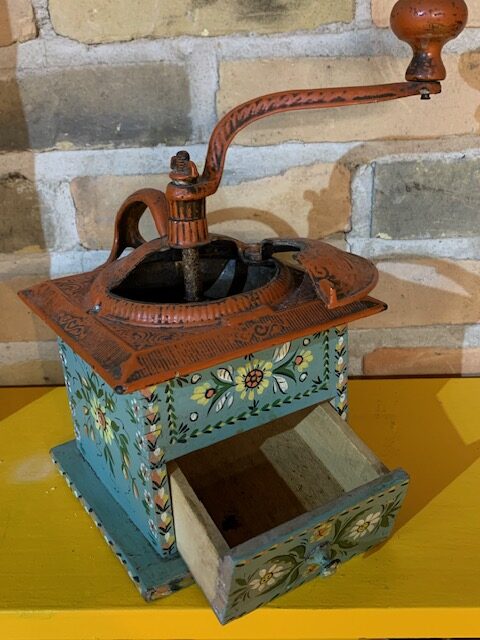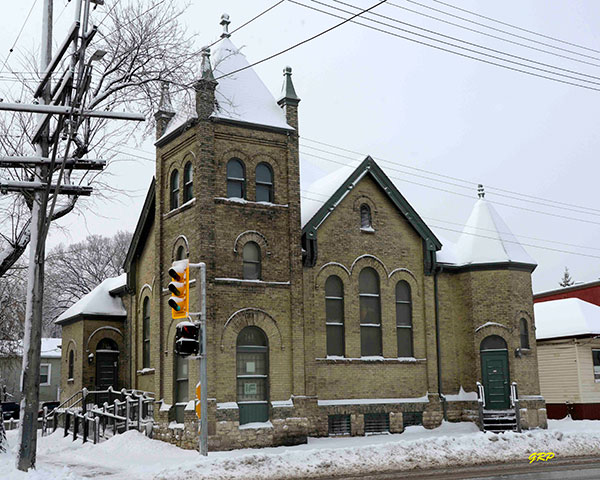Logan Avenue was once known as Snus Boulevard
Snus (rhymes with loose) is a moist, smokeless tobacco product originating from Sweden in the early 1700s. It is placed between the lip and the gums and doesn’t usually require one to spit. Today snus is banned in every E.U. country except Sweden. Try Swedish snus
Around 1860, and for a number of decades after that, life was not great for many Swedes back in the “Old Country”. Due to the lack of available land and a number of consecutive crop failures, the poverty rate grew and tough times were upon much of the population.
As a result, from 1868 to 1914, more than a million Swedes packed up their meagre belongings and made the move to a land they hoped would offer them a better life: United States and Canada. The Canadian government was actively recruiting in Sweden for immigrants by offering inexpensive prairie farmland in the new world, the geography of which was not too dissimilar to their homeland. Opportunity beckoned.
Although three Swedish names are documented among Lord Selkirk’s group of settlers in 1812, the first rural Swedish colony, called Scandinavia, was established in 1886 near the town of Erickson which was originally called Avesta, a town in south-central Sweden. For approximately 50 years ship-loads of Swedes came to this country and many brought with them some snus.
Snus, as described briefly above, was, and still is, considered by many a staple on any shopping list in Sweden. So, it should come as no surprise that the area on Logan Avenue from Main Street to Salter Street – where the majority of these new immigrants settled – would become known to them as Snus Boulevard. Those who found the name somewhat derogatory chose instead to refer to the neighborhood as Swede Town or Little Sweden. In the end, Snus was the most popular.

Most of the newcomers who made this part of town their home were from other Scandinavian countries as well. It was common to hear Norwegian or Danish spoken as you walked down any of the adjoining streets. Business in Winnipeg was booming and many took the opportunity to start one. Rooming houses were the accommodation of choice. They were affordable, a place to stay while looking for work and quite likely the chance to meet new friends from the old world. During the day, men would wander the streets gathering whenever the opportunity arose to meet up with others to hear of any prospects for work. Some found work on farms in Manitoba or Saskatchewan. Others, mainly carpenters, found work on a construction crew building grain elevators or building houses and apartment blocks in the city.
For those who found work elsewhere, scores of them used the Sverige Café as their mailing address. The small café on Logan was run by Anna Walberg who arrived in Winnipeg in 1912. She was a widow with five small children. This was not only a spot for a light lunch and a good cup of coffee, Walberg would put all the incoming mail from Sweden on a table at the back of the café. That’s where the men, returning from “out west” or “in the bush” would hopefully find news from home.
Other businesses thriving in Little Sweden were a couple of barber shops, a Scandinavian book store, a Danish bakery and a pool hall. “Snus” Gustafson’s hardware store was where Swede saws were in big demand. Dahl Printers, located at Stanley and Logan, published two weekly papers, one in Norwegian and one in Swedish. Hagberg Fuel also operated on Logan Avenue for many years. These were the days when Winnipeg was the Swedish Capital of Canada and the third largest city in the nation.
In later years, a gentleman known only as Westberg owned and operated Westberg Swedish Imports on the north side of Logan a few blocks west of Main Street. It was a small, simple store with bare wooden floors and rarely much in the way of stock. One lonely light bulb fought to brighten the drab décor. The month of December was the busiest of the year with locals coming in for the traditional fare of the festive season. He offered Danish Blue cheese, herring, sardines and Sprats from the North Sea. Lutefisk (dried fish) curing in an old wash tub filled with a mixture of water and lye was kept in the dark back room. Two Norwegian favourites were Gjetost (rich goat cheese) and Gamlatost, the smell of which could clear an auditorium of people in minutes. Westberg always served his customers with a smile even though it revealed only two teeth, one on top, the other on the bottom.
Another enterprising character and Swede was Jon Neilsen. He built and owned a few houses on Logan just west of Keewatin. He was a carpenter and a stonemason. Some of his work is still standing rock-solid in the form of a few of the old classic cottages at West Hawk Lake. More notably, he was the man who built the Witch’s Hut at Kildonan Park.

The first Scandinavian Mission Church was built in 1897 and still stands today on the corner of Ellen and Logan although no longer serving as a church. Like other ethnic places of worship being built in our city, it was both the cultural and spiritual centre for the Swedish Lutheran community. It was a haven for those all alone or for wives and mothers to meet on common ground as so many of the men were often far away wherever the work would take them. They went regularly to connect with people who spoke the same language and share their personal stories. As so many arrived with next to nothing, for many, it was first and foremost a place to pray for better times. It was designated a heritage building in 1993.
For more than forty years Snus Boulevard was home to most of the early Scandinavians who made Winnipeg their new home and their new way life. They were quick to learn the language and they assimilated quickly. Eventually, as families became more established, they moved to other parts of the city. Elmwood, the West End and River Heights were the main destination points for most.
Jim Ingebrigtsen’s grandmother was Anna Walberg, owner of the Swedish Café (originally named Sverige Café).


